
Sri Lanka, historically known as Ceylon and officially the Democratic Socialist Republic of Sri Lanka, is an island country in South Asia. It lies in the Indian Ocean, southwest of the Bay of Bengal, separated from the Indian peninsula by the Gulf of Mannar and the Palk Strait. It shares a maritime border with the Maldives in the southwest and India in the northwest.
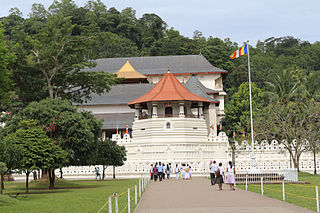
Kandy is a major city in Sri Lanka located in the Central Province. It was the last capital of the ancient kings' era of Sri Lanka. The city is situated in the midst of hills in the Kandy plateau, which crosses an area of tropical plantations, mainly tea. Kandy is both an administrative and religious city and the capital of the Central Province. Kandy is the home of the Temple of the Tooth Relic, one of the most sacred places of worship in the Buddhist world. It was declared a World Heritage Site by UNESCO in 1988. Historically the local Buddhist rulers resisted Portuguese, Dutch, and British colonial expansion and occupation.

Provinces are the first level administrative divisions of Sri Lanka. Currently, Sri Lanka is divided into 9 provinces. Each province is further divided into districts, which are further divided into divisional secretariats.
The caste systems in Sri Lanka are social stratification systems found among the ethnic groups of the island since ancient times. The models are similar to those found in Continental India, but are less extensive and important for various reasons. Modern times Sri Lanka is often considered to be a casteless society in south asia.
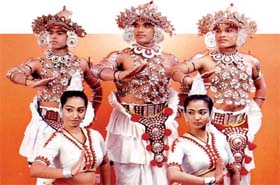
Kandyan dance encompasses various dance forms popular and native to the area called Kandy of the Central Hills region known as Udarata in Sri Lanka, which have today spread to other parts of the country. It is an example and considered a masterpiece and a sacred artwork in sri lanka

There are several styles of classical and folk dance in Sri Lanka.
Govigama is a Sinhalese caste found in Sri Lanka. They form approximately half of the Sinhalese population and are traditionally involved in agriculture. The term Govigama became popular during the last period of the Sinhalese Kingdom of Kandy. Its members have dominated and influenced national politics and Sinhalese Buddhism.
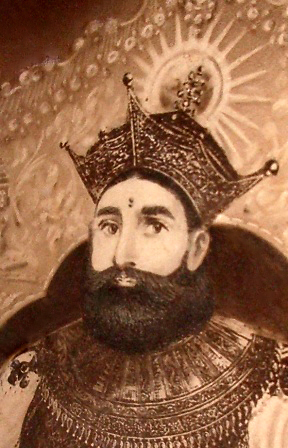
Sri Vikrama Rajasinha was the last of four kings to rule the last Sinhalese monarchy of the Kingdom of Kandy in Sri Lanka. The Nayak Kings were of Telugu origin and practiced Shaivite Hinduism and were patrons of Theravada Buddhism. The Nayak rulers played a huge role in reviving Buddhism in the island. They spoke Telugu and Tamil, and used Tamil as the court language in Kandy alongside Sinhala.

British Ceylon, officially British Settlements and Territories in the Island of Ceylon with its Dependencies from 1802 to 1833, then the Island of Ceylon and its Territories and Dependencies from 1833 to 1931 and finally the Island of Ceylon and its Dependencies from 1931 to 1948, was the British Crown colony of present-day Sri Lanka between 1796 and 4 February 1948. Initially, the area it covered did not include the Kingdom of Kandy, which was a protectorate, but from 1817 to 1948 the British possessions included the whole island of Ceylon, now the nation of Sri Lanka.

Barrel drums are a class of membranophone, or drum, characterized by a barrel-shape with a bulge in the middle. They can be one-headed and open at the bottom, or two-headed at opposite ends. Examples include the Vietnamese trong chau and the bendre of the Mossi of Burkina Faso.

The Kingdom of Kandy was a monarchy on the island of Sri Lanka, located in the central and eastern portion of the island. It was founded in the late 15th century and endured until the early 19th century.
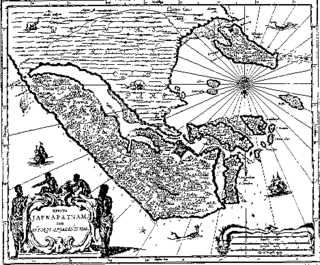
The Portuguese conquest of the Jaffna kingdom occurred after Portuguese traders arrived at the rival Kotte kingdom in the southwest of modern Sri Lanka in 1505. Many kings of Jaffna, such as Cankili I, initially confronted the Portuguese in their attempts at converting the locals to Roman Catholicism, but eventually made peace with them.
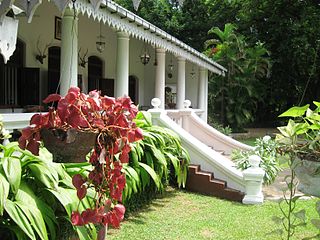
Walauwa or walawwa is the name given to a feudal/colonial manor house in Sri Lanka of a native headmen. It also refers to the feudal social systems that existed during the colonial era.
Deshamanya Rohan de Saram is a British-born Sri Lankan cellist. Until his 30s, he made his name as a classical artist, but has since become renowned for his involvement in and advocacy of contemporary music. He travels widely and is much in demand for workshops and summer schools in addition to sustaining a schedule of adventurously programmed concerts.

Vijaya Rajasinha was a member of the Madurai Nayak Dynasty and succeeded his brother-in-law Vira Narendra Sinha as the King of Kandy. He was raised in Kandy and was familiar with the politics and culture of the court and society at large, including those of his Telugu kinfolk.

In the history of Sri Lanka, the Kandyan Convention was a treaty signed on 2 March 1815 between the British governor of Ceylon, Sir Robert Brownrigg, and the chiefs of the Kandyan Kingdom, British Ceylon, for the deposition of King Sri Vikrama Rajasinha and ceding of the kingdom's territory to the British Crown. It was signed in the Magul Maduwa of the Royal Palace of Kandy.
Rajamanthri Walauwa or manor house of Rajamanthri is situated in Karandagolla, Hanguranketha, Sri Lanka. Rajamanthri Walauwa is an eight-room, 200-year-old mansion built by the last Chief Minister of the Kingdom of Kandy in 1804. It was fully restored in 1944. During the early 1970s, Prince Gamini Rajamanthri and Prince Samantha Rajamanthri became the new inhabitants of the Rajamanthri Walauwa. To this day, the manor house is managed by Prince Julius' sons.
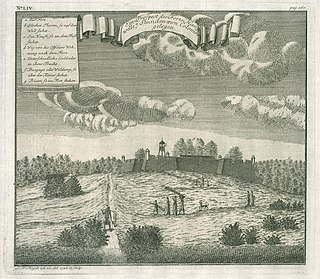
Hanwella fort was located in Hanwella, Colombo, on the banks of the Kelani River. Hanwella, which means 'skin sands', was the site of an ancient ferry route across the river. Malwana fort was situated about 15 km (9.3 mi) on the other side of the Kelani River.

This is a bibliography of works on Sri Lanka.

Coffee production in Sri Lanka peaked in 1870, with over 111,400 hectares being cultivated. The Dutch had experimented with coffee cultivation in the 18th century, but it was not successful until the British began large scale commercial production following the Colebrooke–Cameron Commission reforms of 1833. By 1860, the country was amongst the major coffee-producing nations in the world. Although coffee production remains a source of revenue, it is no longer a main economic sector. In 2014, the country ranked 43rd of largest coffee producers in the world.














